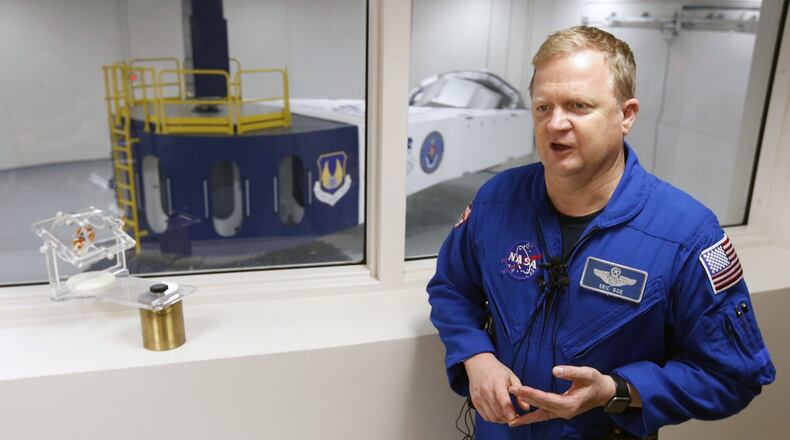The report, titled “Competing in Space,” was created at the request of Air Force senior leaders to give a threat assessment for U.S. and allied use of space, and to present an outlook for future space efforts.
NASIC — based at Wright-Patterson Air Force Base — identified key trends that will shape the future of space activity. It found:
• International policies remain elusive: The international community has not achieved a global consensus on new laws or norms despite efforts to increase transparency in space operations, the report found.
“China and Russia continue to endorse a draft “Treaty on the Prevention of the Placement of Weapons in Outer Space, the Threat or Use of Force Against Outer Space Objects.” While this draft promotes “no first placement” of weapons in space, it fails to address a variety of anti-satellite weapons and lacks meaningful verification mechanisms. Furthermore, despite publicly insisting that space is a peaceful domain, these competitors are continuing development of several anti-satellite weapons,” according to the report.
• Technology speeding up the space game: More than 50 countries and multinational organizations own or operate space assets, while China and Russia maintain the largest foreign space system fleets. This has been made possible by increased commercialization and affordability of space technologies, the report said.
• Space is increasingly militarized: Through military reforms, China and Russia have organized new military forces devoted to the employment of space and counterspace capabilities and regularly integrate them into military exercises., according to the report.
• U.S. space-based capabilities are vulnerable: The report found U.S. and allied militaries use space systems to connect, warn, guide, and inform decisions across the entire spectrum of conflict. Adversaries are aware of the advantages space services provide and actively seek capabilities to deny them. Sensing satellites collect images, electronic emissions, and other data across the globe to meet a variety of customer needs. A decade ago, foreign remote sensing satellites numbered nearly 100 — by mid-2018, that number reached more than 300, the report found.
China plans to become an international leader in lunar research and exploration with goals to assemble a lunar research station beginning in 2025, perform a crewed Moon landing mission in 2036, and establish a Lunar Research and Development Base around 2050. Russia plans to launch a robotic moon mission in 2021, the report found.
The NASIC report pointed to future issues that could occur. As the number of objects in space increases, particularly in low Earth orbit, the risk of collisions will grow, according to the report. Amid the growing popularity of smaller satellites, U.S. and allied space monitoring capabilities, which help prevent collisions in space, may struggle to track and identify objects and discriminate between threats and non-threats.
Wright-Patt would be at the center of a growing focus on space warfare. A $182 million building project will expand NASIC’s footprint at Wright-Patt. NASIC has pressed the need for the new space to relieve overcrowding, agency spokeswoman Michelle Martz told the Dayton Daily News. NASIC’s workforce has increased by about 1,500 employees, or 100 a year between 2000 to 2015, according to the agency.
“The intelligence activities at Wright-Patterson bulk larger now than in the recent past because the focus of national security strategy is shifting from counter-terrorism to great power rivalries,” Loren B. Thompson, a senior defense analyst with the Virginia-based Lexington Institute and a defense industry consultant, told this news organization.
As space continues to play an increasingly critical role in the nation’s defense, it also means new medical specialties for military doctors. Air Force Space Command medics are developing requirements and training for future space surgeons, building on current training requirements.
“Space is no longer a neutral, docile domain,” said Col. Walter Matthews, AFSPC command surgeon, in a statement. “It has become a contested environment where many state and non-state actors actively seek to disrupt U.S. space capability.”
Medical Airmen are focusing on four areas of interest: managing fatigue exposure, defining fitness to meet the needs of line commanders, working within the specification of deployment and readiness as well as evaluating retention standards for certain conditions, according to Wright-Patterson.
“Space is a completely different and separate domain from any other in which the U.S. Air force operates,” Matthews said in a statement. “This is the reason for our development of a team of space medicine specialists that exist in a space medicine culture.”
About the Author
